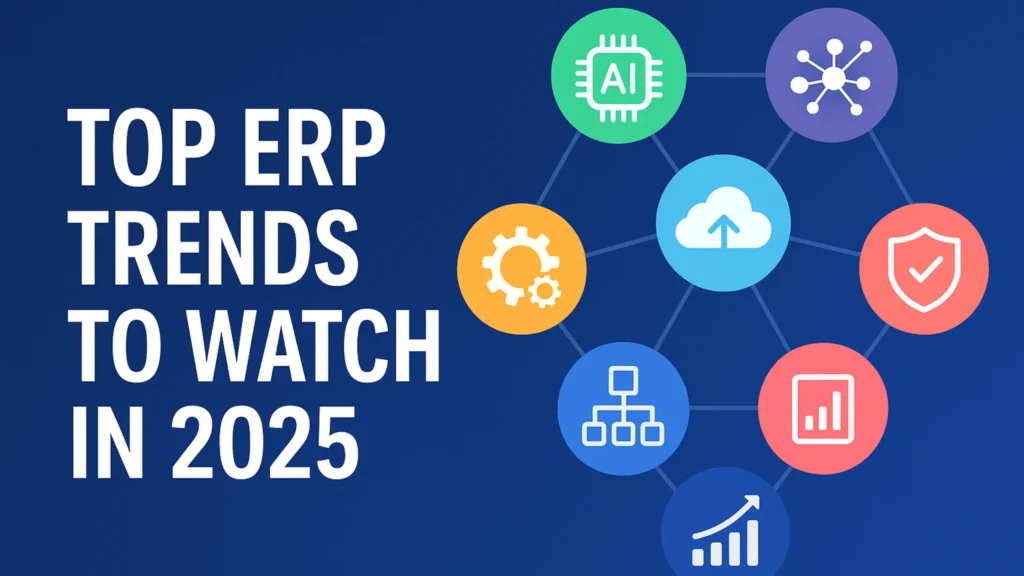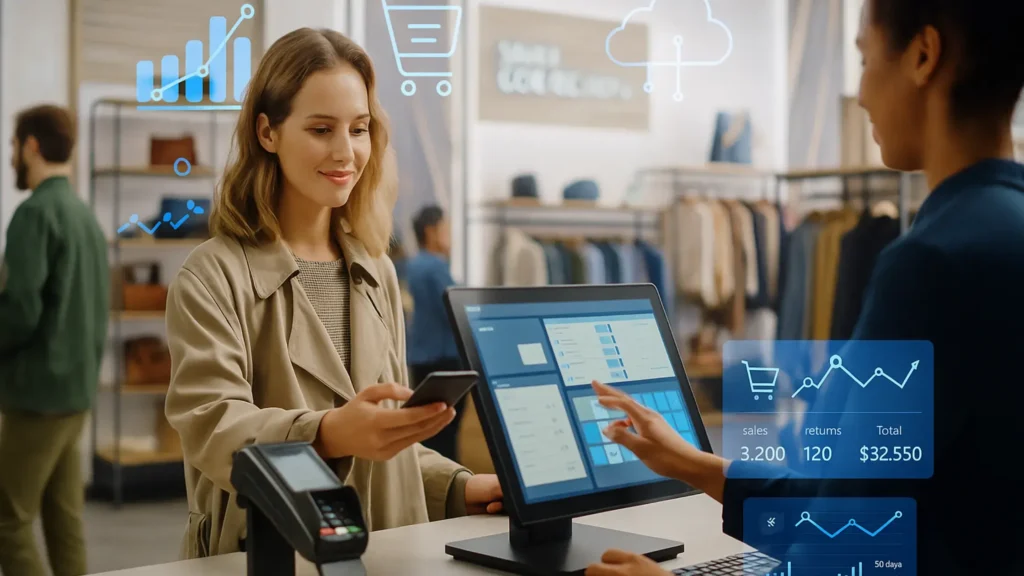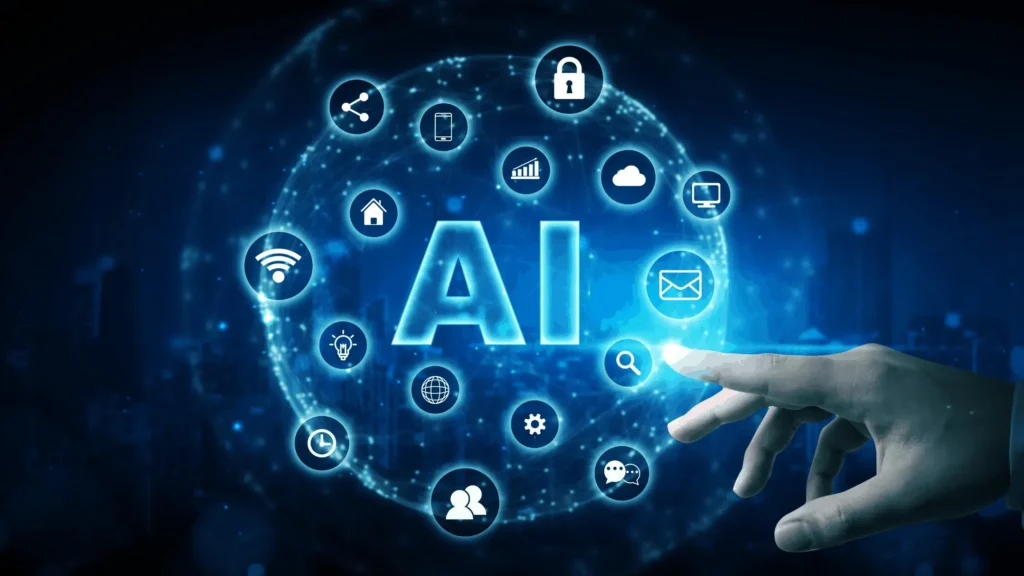Enterprise Resource Planning (ERP) systems are essential tools for businesses. They help manage key areas like finance, human resources, supply chain, and customer relationships. The ERP landscape is changing quickly and is moving beyond just back-office functions.
New technologies like Artificial Intelligence (AI), cloud computing, and the Internet of Things (IoT) are turning ERP into a more intelligent, flexible, and connected platform. For businesses aiming to survive and thrive in the competitive landscape of 2025, understanding and adopting these emerging ERP trends is no longer optional. It’s a strategic imperative.
This article discusses the prominent trends that will shape the future of ERP. It offers decision-makers the insights they need to adapt to this changing environment and use innovation to improve efficiency and support ongoing growth.
1. The Ascent of Autonomous ERP: Leveraging AI and Machine Learning
Artificial intelligence (AI) and machine learning (ML) are important parts of enterprise resource planning (ERP) systems. They help automate tasks, provide useful insights, and improve decision-making. This change is happening because we have more data available and because AI algorithms are getting better.
Why It Matters: AI-driven ERP systems improve efficiency by automating everyday tasks like processing invoices, entering data, and generating reports. This automation frees up employees to focus on more important strategic work.ML algorithms analyze vast datasets to identify patterns, predict demand fluctuations, optimize inventory levels, and detect potential risks like fraud or supply chain disruptions.
For instance, an AI-powered ERP system can automatically adjust production schedules based on predicted sales trends, minimizing overstocking or stockouts. This leads to lower costs, better forecasting accuracy, and a faster response to market changes.
2. Embracing Scalability and Flexibility
The shift towards cloud-first ERP deployments continues to accelerate, with businesses recognizing the inherent advantages of cloud-native architectures. Modern cloud ERP systems are designed to take full advantage of the cloud’s benefits, including scalability, resilience, and flexibility.
Why It Matters: Cloud-native ERP allows businesses to easily scale their systems based on changing needs without large upfront costs or the need for major infrastructure changes.The subscription model makes it easier for companies to manage costs by lowering initial expenses and helping them predict ongoing operating costs.
Cloud ERP simplifies integration with other cloud-based applications, creating a more connected and flexible IT environment. With automatic updates and maintenance from the vendor, internal IT teams have less to worry about, allowing them to focus on important projects. Cloud ERP is also easier to access, which helps teams work remotely and collaborate from different locations.
3. Mobile-First ERP: Empowering the Agile Workforce
In today’s mobile work environment, it is essential to access and interact with ERP systems from anywhere and at any time. Mobile ERP is no longer just about viewing data; it now offers complete functions on smartphones and tablets.
Why It Matters: Mobile ERP gives employees in sales, field service, and warehouse management real-time access to important data and tasks. Sales teams can check inventory, update customer information, and process orders. Field technicians can view service histories, diagnose problems, and update job statuses right away.
Using mobile devices, warehouse staff can manage inventory and fulfill orders directly from the warehouse floor. This increased mobility helps employees work better and faster. It reduces delays and increases productivity by allowing people to finish their tasks from anywhere.
4. The Convergence of Emerging Technologies: IoT, Blockchain, and RPA
ERP systems incorporate advanced technologies such as the Internet of Things (IoT), blockchain, and robotic process automation (RPA). These tools help businesses work better, be more transparent, and automate tasks.
Why It Matters:
- IoT Integration: Connecting IoT devices to ERP systems gives you real-time data from machines, sensors, and equipment. You can use this data for predictive maintenance, better asset management, and improved visibility in your supply chain. For example, sensors on manufacturing equipment can send data to the ERP system, triggering maintenance alerts before a breakdown occurs and minimizing downtime.
- Blockchain Integration: Blockchain technology makes ERP supply chain management, financial transactions, and contract management safer and more transparent. Its immutable ledger provides a single source of truth, reducing disputes and improving the traceability of goods and information.
- RPA Integration: RPA automates repetitive, rule-based tasks within ERP workflows, such as data entry, invoice processing, and report generation. RPA automates repetitive tasks, allowing employees to focus on more important activities that add value. This improves efficiency and reduces mistakes.
5. Hyper-Personalization and Enhanced User Experience (UX)
Modern ERP systems are moving away from one-size-fits-all interfaces. They now offer more personalized and user-friendly experiences. This includes customizable dashboards, views for different roles, and easy-to-use interfaces that help users adopt the system and be more productive.
Why It Matters: A well-designed and personalized user interface can greatly improve user satisfaction and efficiency. Dashboards tailored to specific roles provide users with the information and tools they need, reducing excess clutter and helping them focus better.
Customizable workflows and layouts allow users to tailor the system to their preferences and work styles. Improving the user-friendliness and simplicity of ERP systems can help businesses reduce resistance from users. This change can lead to better data accuracy and a higher return on their ERP investment.
6. Sustainability at the Core: ERP for a Greener Future
Environmental, social, and governance (ESG) factors are becoming increasingly crucial for businesses. Modern ERP systems incorporate features that help organizations track, manage, and report on their sustainability efforts.
Why It Matters: Sustainability-driven ERP features enable businesses to monitor their carbon footprint, track energy consumption, manage waste effectively, and ensure ethical sourcing throughout their supply chain.
This helps organizations comply with regulations, meet stakeholder expectations, and identify opportunities for cost savings through resource optimization and waste reduction. An ERP system helps businesses track the environmental impact of their suppliers. This information allows companies to make better and more sustainable sourcing decisions.
7. Industry-Specific ERP: Tailored Solutions for Unique Needs
Different industries have specific needs, and more businesses are choosing industry-specific ERP (Enterprise Resource Planning) solutions. These customized systems provide built-in features and best practices tailored to the unique challenges of each sector.
Why It Matters: Industry-specific ERP solutions cut down on the need for heavy customization, which saves time and money during implementation. They include features and workflows that match industry standards, helping companies adopt them faster and see results sooner.
For instance, an ERP system for manufacturing might have tools for production planning, quality control, and shop floor management. In comparison, an ERP system for retail would prioritize inventory management, point-of-sale integration, and customer relationship management.
8. The Power of Data: Advanced Analytics and Business Intelligence (BI) Integration
Modern ERP systems are no longer just transactional systems; they are becoming powerful data hubs that provide real-time insights through advanced analytics and integrated Business Intelligence (BI) tools.
Why It Matters: Seamlessly integrated analytics and BI capabilities enable businesses to transform raw ERP data into actionable insights. Users can create clear reports and visualize essential performance measures, known as key performance indicators (KPIs). They can also analyze data to find trends, understand how customers behave, and make decisions based on this information for all business areas.
For example, integrated BI can provide real-time dashboards displaying sales performance, financial metrics, and supply chain efficiency, empowering managers to identify areas for improvement and make timely adjustments.
Conclusion
The ERP landscape 2025 will be characterized by intelligence, agility, and interconnectedness. The trends highlighted above, from AI-powered automation and cloud-native flexibility to mobile accessibility and sustainability integration, represent a significant evolution in how businesses leverage ERP to drive performance and achieve their strategic objectives.
Adopting new technologies and focusing on ongoing innovation is essential to staying ahead of industry trends. Modern ERP systems can significantly transform your business. Business leaders need to evaluate their current ERP systems, understand new trends, and create a technology plan that aligns with the future of enterprise resource planning. Make 2025 a year of change for your company.
Work with Everite Solutions to navigate this changing landscape and ensure your ERP strategy is prepared for the future. Contact us today to explore customized ERP solutions that can help your business reach its full potential by 2025.







